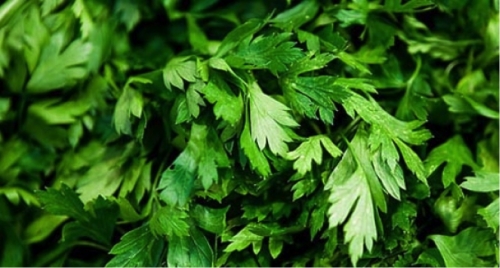Il prezzemolo, Petroselinum hortense Hffm, del quale si vantano diverse applicazioni medicinali, è soprattutto un condimento: vale a dire che sotto il suo sapore e profumo, si nascondono proprietà di estrema importanza per l’equilibrio vitaminico e minerale del corpo umano e può essere quindi considerato come uno degli alimenti strategici che la natura ha messo a disposizione della specie umana.
Il prezzemolo è ricco di vitamine, soprattutto C e A, ferro, calcio e manganese.
Si consiglia l’impiego a crudo e colto fresco. Va bene aggiungerlo nelle insalate, nei legumi, nelle minestre, nelle frittate, nei piatti a base di carne e pesce.
Per gli amanti delle bruschette fantasiose, una salsina composta da prezzemolo, un po’ d’aglio tritato e burro.
La coltivazione del prezzemolo è piuttosto semplice, purchè si disponga di terra ricca di humus nell’orticello di famiglia, avendo cura di seminarlo da febbraio ad agosto. I semi devono essere appena interrati. Il raccolto incomincia dopo due mesi e mezzo dalla semina.
Parsley (Petroselinum crispum), which boast several medicinal applications, is primarily a condiment. That is to say, under its flavor and aroma hides properties of extreme importance for the vitamin and mineral balance of the human body. It can, therefore, be regarded as one of the basic foods that nature has made available to the human species.
Parsley is rich in vitamins; especially A and C, iron, calcium, and manganese.
As chefs, we recommend using fresh, raw parsley. Add the herb to salads, legumes, soups, omelets, and meat and fish dishes.
For lovers of imaginative bruschetta, create a sauce made from parsley, a little chopped garlic and butter.
Parsley cultivation is quite simple. The land is sown from February to August. The seeds are planted just below the surface and the harvest begins two and a half months after sowing.



